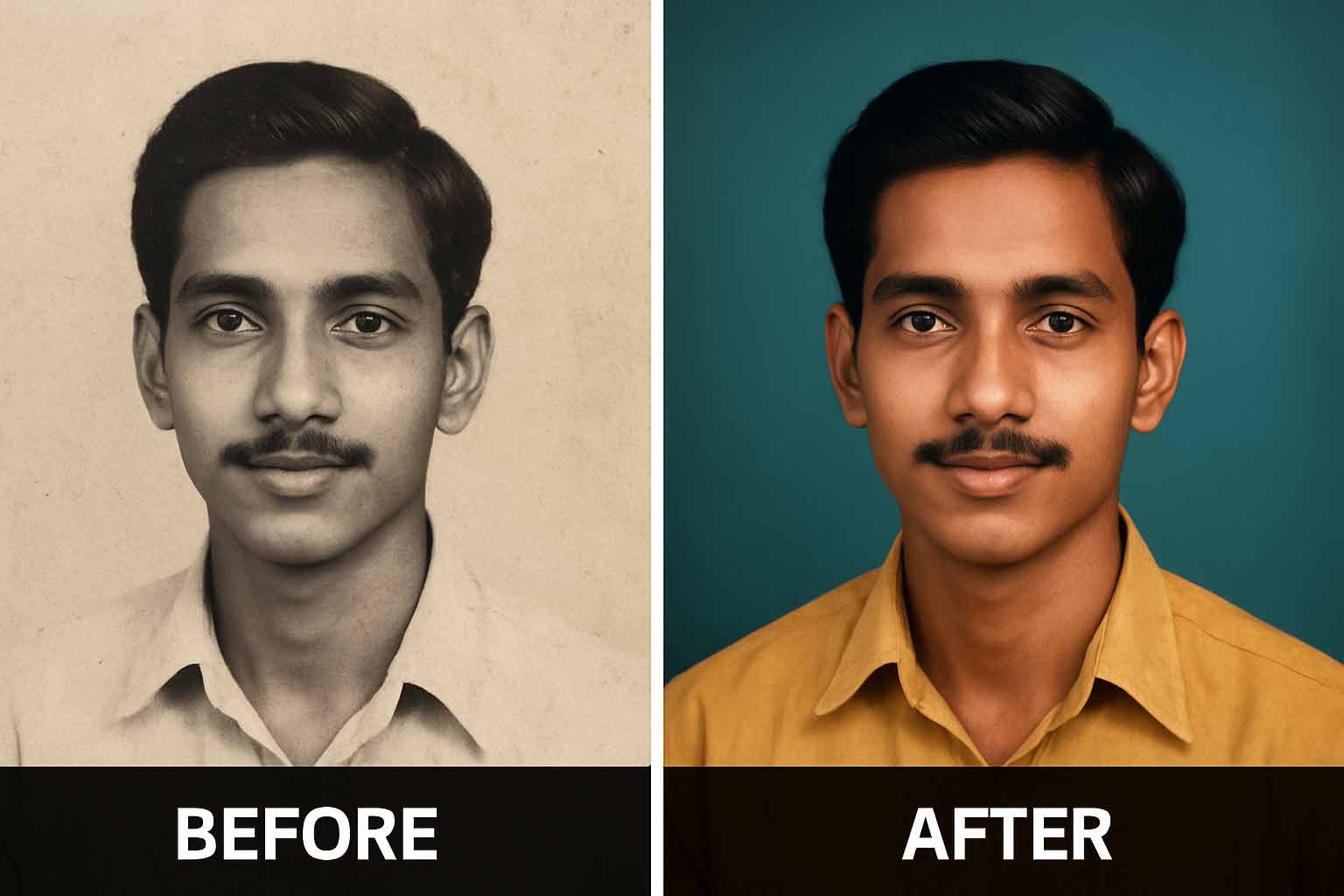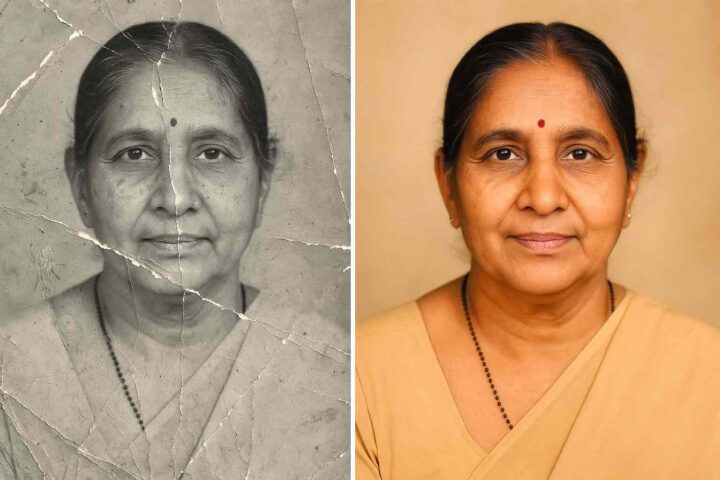Why the Prompt Matters
AI editors such as Stable Diffusion, Photoshop Generative Fill, and DeOldify respond to natural language instructions. A precise prompt tells the model to respect skin tones, fabric textures, and lighting, while avoiding harsh or artificial colors. When the guidance is clear, the result looks authentic rather than overprocessed, and the photo keeps its historical character.
Copy-and-Paste Prompt
“Colorize the black-and-white photograph with historically accurate, natural tones. Maintain film grain and detail. Avoid oversaturation. Preserve facial traits and clothing texture.”
This wording directs the AI to prioritize realism, protect fine detail, and keep the image faithful to the original scene. Adjust the phrasing if you know specific uniform colors, regional attire, or era-correct palettes.
A Simple Example
Imagine uploading a century-old family portrait. After applying the refined prompt, jackets take on subtle navy or charcoal hues, skin tones appear warm and natural, and background drapery regains gentle color. The subjects look the same, same expressions, same posture—only now the moment feels immediate and alive.
Getting Started in Minutes
Upload your black and white image to your preferred editor, paste the prompt, and render. Most tools return a result within seconds. If needed, make light adjustments to contrast or white balance so the colorized version matches the original exposure. Because the prompt guards texture and grain, the photo maintains its vintage authenticity while gaining natural color.
Realism or Artistic Mood
Prompts are flexible. If your goal is documentary accuracy, keep the instruction focused on historical realism. If you prefer a creative interpretation, guide the model toward “muted vintage colors,” “soft pastels,” or “sunset warmth.” The ability to steer mood without sacrificing identity is what makes prompt-based colorization so powerful.
Resources and Next Steps
Explore more image editing prompts and workflows in our AI Tools hub and step-by-step guides in Tutorials. For weekly updates on imaging breakthroughs, visit our News section. Professional and open-source options include Adobe Photoshop Generative Fill, the DeOldify project, and the broader Stable Diffusion ecosystem.




